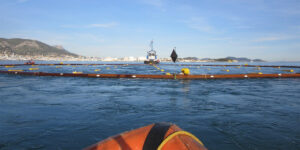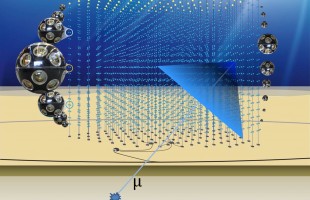The KM3Net neutrino telescope under construction in the deep sea off the coast near the French town of Toulon is now joined by a large NIOZ instrument that measures currents and water temperatures.
Research vessel Pelagia dragged the 70 meter diameter steel ring tube with sensors to its intended location, where it has been sunk by underwater parachutes to a depth of 2500 meters.

The project was funded by a subsidy for KM3Net in the Roadmap for Large-Scale Infrastructure 2018 from science financier NWO. The measurement data must, among other things, provide a picture of the turbulence and wave movements in the deep sea around the KM3NeT telescope.
Over the past few weeks, the measurement setup was brought in and erected on the quay in the seaport of La Seyne sur Mer in Toulon. The team led by NIOZ researcher Hans van Haren keeps a blog on which progress can be followed on a daily basis.
Last week the Pelagia arrived in the port and took the now assembled measuring ring in tow out to sea. On Sunday it was successfully sunk.
Nikhef is an important partner in the construction of the KM3NeT neutron telescope in the Mediterranean. The instrument will observe a volume of one cubic kilometer of water in the dark deep sea with thousands of light sensors. They pick up flashes of light that reveal the passage of neutrinos from the cosmos.
From the signals from the scattered sensors the source of the particles can be visualized. Neutrinos are almost massless particles that are released during nuclear processes in e.g. stars and star explosions. They form an almost unexplored window on the cosmos.

